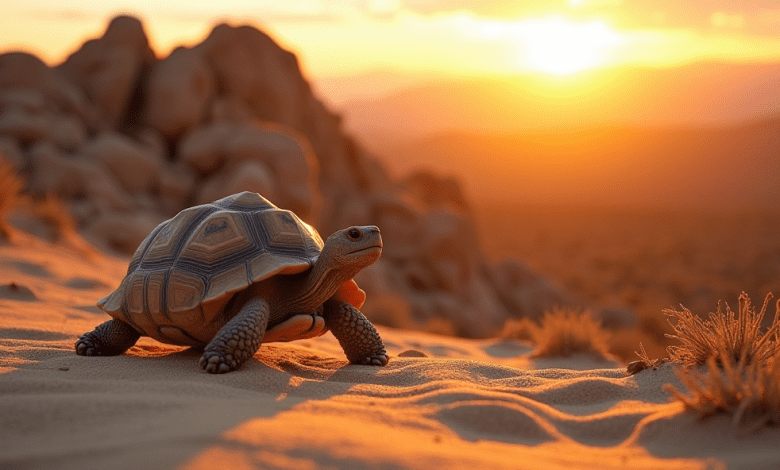How to Safely Interact with Tortoises in Joshua Tree National Park: Essential Tips for Visitors

What to Do If You Encounter a Tortoise in Joshua Tree National Park
Encountering a tortoise in Joshua Tree National Park is a unique experience that many visitors cherish. These fascinating creatures can be seen in their natural habitat, adding to the park’s charm and biodiversity. However, it’s essential to understand how to interact safely and respectfully with these animals to ensure their wellbeing and your safety. In this article, we’ll explore the best practices to follow if you come across a tortoise in this stunning desert landscape.
Understanding the Desert Tortoise
Before we dive into what to do when you encounter a tortoise, let’s learn a bit about these remarkable reptiles. The desert tortoise (Gopherus agassizii) is a threatened species native to the arid regions of the southwestern United States. Known for their dome-shaped shells and long lifespans, which can exceed 50 years, desert tortoises are herbivores, primarily feeding on grasses, wildflowers, and cacti.
These tortoises are generally most active during the spring months and can often be seen basking in the sun or retreating into their burrows to escape the heat. Encountering one of these gentle creatures while exploring Joshua Tree provides an opportunity for connection with nature.
What to Do When You Encounter a Tortoise
1. Observe from a Distance
If you spot a tortoise, the first and most important action is to observe from a distance. Desert tortoises are wild animals that thrive best when left undisturbed. Maintain a minimum distance of at least 20 feet to avoid startling them. Observing quietly allows you to appreciate the tortoise’s behavior without causing stress or harm.
2. Do Not Touch or Pick Up the Tortoise
While it may be tempting to interact more closely with a tortoise, it’s crucial to avoid the urge to touch or pick up these animals. Handling a tortoise can cause significant stress and may even lead to injury. Tortoises have delicate internal structures, and any handling may disrupt their natural behaviors.
3. Do Not Feed the Tortoise
Although it might seem like a friendly gesture, feeding tortoises is prohibited and harmful to their health. Human food can disrupt their natural diet and introduce substances harmful to their digestive systems. It’s important to let these animals forage and feed naturally in their environment.
4. Stay on Designated Trails
If you encounter a tortoise while hiking, make sure to stay on designated trails. This practice not only preserves the fragile desert ecosystem but also minimizes the risk of unintentionally stepping on or disturbing the tortoise. Following this guideline protects both you and the wildlife.
5. Report Your Sighting
Your sighting of a desert tortoise can provide valuable data for conservation efforts. If you encounter a tortoise, consider reporting it to the National Park Service. They may ask for details such as the location, the time of the encounter, and any noticeable characteristics of the tortoise. This information helps park officials monitor tortoise populations and implement effective management strategies.
The Importance of Conservation
Understanding how to interact with tortoises is crucial not just for your experience but for the species’ survival. Desert tortoises face numerous threats, including habitat loss, climate change, and disease. By respecting their space and following these guidelines, visitors play a vital role in conservation efforts.
Protecting Their Habitat
Conservation doesn’t stop at simply observing. Here are a few additional ways to contribute to the protection of tortoise habitats:
- Leave No Trace: Always pack out what you bring in and leave the environment as you found it.
- Educate Others: Share this information with fellow visitors to promote awareness and awareness around desert tortoise protection.
- Volunteer: Look for opportunities to volunteer with organizations focused on wildlife conservation, especially those that work with desert ecosystems.
Conclusion
Encountering a tortoise in Joshua Tree National Park is a memorable and enchanting experience. By understanding how to interact respectfully with these extraordinary creatures, you contribute to their wellbeing and the preservation of their environment. Remember to observe from a distance, avoid handling or feeding them, stay on trails, and report your sightings to the park. Educating yourself and others about these precious animals ensures that they will continue to flourish in Joshua Tree National Park for generations to come. Enjoy your visit, and happy tortoise watching!




